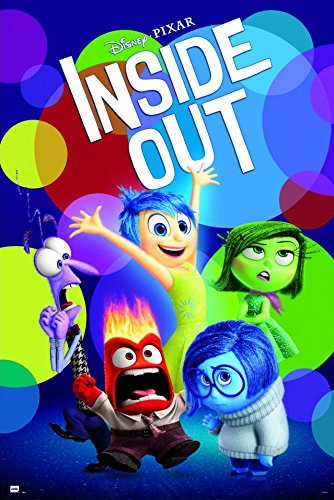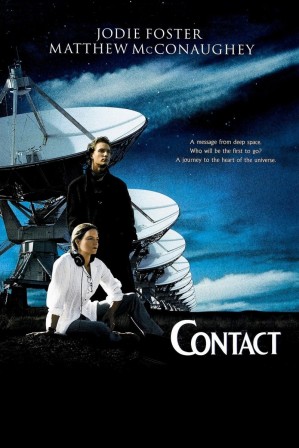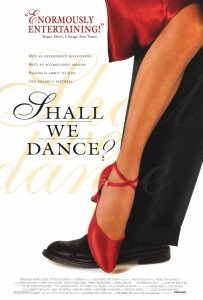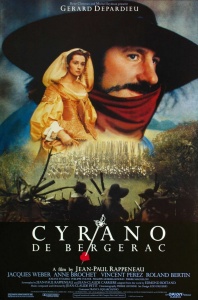
Paul: We wrote about The Life and Death of Colonel Blimp a few years ago. More recently, I found myself considering that film in relation to John Ford’s The Man Who Shot Liberty Valance. Both are ambitious national statements, attempting to get at the heart of what Britain and America, respectively, are all about. Both, also, filter these civilizational questions through quietly heartbreaking love triangles. Their tarnished heroes begin each film in old age, reflecting on the past. Obviously, no single story can encompass an entire country’s identity, and the similarities in perspective between these two films should give us pause. Still, I respond to that ambition, and I think the ambivalent conclusions these films reach are valuable. John Ford’s authority on the subject of the American West is still largely respected, and Liberty Valance is one reason why.
Macro questions aside, this movie is also a finely tuned drama, a series of collisions between archetypal personalities. At the very least, we get to enjoy the clash of two radically different incarnations of American masculinity in the forms of John Wayne and James Stewart — with Lee Marvin thrown in as a bonus. Tough question, perhaps, but who would you say is your favorite of those three?
Daniel: This was one of those times that I was violently reminded that there are some fantastic films and performances out of the primary spotlight of pop-culture. The Man Who Shot Liberty Valance has always been within my peripheral. Obviously John Ford has created some pillars in not only the Western genre, but in American Cinema history as a whole. Add to that being related to a number of John Wayne fans and a grandfather who I primarily remember watching exclusively westerns all the time, this was one I should have watched years ago. All the performances in this film were strong and believable and funny and sad. But between the shared heroes of Tom Doniphon (John Wayne) and Ransom Stoddard (Stewart) I’d be leaning ever so slightly in favor of Stoddard. While my stereotypical-masculine-admiring upbringing has me absolutely loving John Wayne’s swagger, and no-nonsense approach to a problem, I find myself nowadays relating more to Stewart’s by the book conscience driven passion. I love that Stewart is given ample opportunity to explore emotional peaks and valleys. There’s really nothing quite like when he gets riled up in front of an audience.
That being said, I also really appreciated and didn’t quite expect the vulnerability displayed in the character of Tom Doniphon. He has a rough and tough surface, something we come to expect with Wayne’s portrayal of masculinity. But rather than a minor softening towards a given situation where he largely stays the same, when he loses “his gal” we see him utterly crushed. He destroys his life’s work in a fit of drunken passion. Seeing his walls tumble like that was heartbreaking and powerful, especially in consideration of his ultimate reasoning for the good deed he had just done. I haven’t touched on Lee Marvin’s titular character yet I guess. But that’s not to say there isn’t a ton to say there. I hated him in the best way possible. My strongest recollection of the actor’s work is the drunken gun-fighter in Cat Ballou in which he played a largely comedic role. He is such a good ruthless, hateable villain in this, making the anger and hatred spewing from Ransom all the more believable.
Paul: In terms of classic male types, there are plenty of great examples in the supporting cast as well: the comical fat guy (Andy Devine), the comical drunk (Edmond O’Brien), and the sad bartender-or-in-this-case-restaurant-owner (John Qualen). Even the sidekicks are great, from the quietly noble Woody Strode to the one-two punch of Silent Henchman Lee Van Cleef and Crazed Henchman Strother Martin. It’s a phenomenal cast, in short.
Back to the central conflict, though. I’ve always considered myself more of a Stewart man, too. So it’s interesting to me that the character and performance are allowed to be so unlikable, at least on occasion. Stoddard isn’t disturbed like some of Stewart’s characters in Hitchcock films. He’s an uncomplicated good guy who just happens to be a little smug sometimes, and the movie humiliates him accordingly. Clearly, Ford had more sympathy for Wayne, correctly viewing Doniphon as the more romantic and tragic character. Stoddard is the outsider, the lawyer from the east who wants to bring the unnamed territory of the story up to speed with civilization. Doniphon and Stoddard are on the same page when it comes to the ruthless Liberty Valance, but Doniphon doesn’t think much of Stoddard’s chances in a West still governed by brute force. So the conflict takes the form of the kind of glass-breaking power plays that Ford favored. Valance trips Stoddard while the latter is doing the “effeminate” work of waiting on tables. Doniphon steps in, and it becomes a contest of who can be made to pick the steak up off the floor. I love these macho battles, even as I agree with Stoddard that they’re pretty silly. Doniphon, like a few other Wayne characters in Ford’s films, becomes a Moses-like figure, crucial in paving the way for the West to join America, but not permitted to enter the Promised Land himself. This is the first movie I’d want to show anyone who doubts that John Wayne could act. Then again, he does say “pilgrim” an awful lot in this, which might be distracting to anyone who doesn’t already know how to look more closely.
Daniel: It’s almost obscene how many times Wayne uses the word pilgrim. It’s like John Wayne doing a parody of John Wayne. Or rather, all parodies of John Wayne are just a little too accurate. In any case I love the analogy of Doniphon (and a good number of Wayne’s characters for that matter) being a Moses character in that he’s not allowed to enter the land he helps find. It’s an especially poignant analogy when contrasted with the scene where he confronts the fact that everything he’s worked for, a wife and family a home, won’t happen. He’s first denied entrance into the promised land, and then sees another man live his legacy. He doesn’t complain, he doesn’t tell anyone because that’s not the type of man he is. He is far more entertaining than Ransom. It’s interesting to see a genre so marked by violent masculinity give the spotlight to someone so opposed and disgusted by that very violence. Clint Eastwood’s Unforgiven is hailed as a western that puts the brutal violence of the western genre under the scrutiny that it deserves, and yet here we see Ransom almost throw away his entire career because of the guilt he felt at killing a man that deserved to die. Sure, Doniphon had no qualms about it, and to be fair I didn’t feel at all bad for Liberty and his deserved fate. If anything I think the audience is supposed to feel Ransom is being unreasonable in his guilt. Be that as it may it feels like a far more accurate depiction that a man might feel after committing an act they consider to be so repulsive. By believing that he killed liberty, Ransom’s entire being, his values all the morals he held dear were thrown away in a moment of rage. And that immorality is what propelled him towards the type of greatness he initially wanted.
And of course it’s well worth talking about Hallie Stoddard (Vera Miles). She’s placed squarely between the two male heroes of the film, the catalyst for most of the tension between them. Ransom and Doniphon are polar opposites and she finds herself somewhere in between. The progression of the story from her viewpoint shows her that the west is far more brutal than Ransom can handle and the future is too tame for Doniphon to stomach. When one man ultimately wins her affection it seals how the fate of both other parties.
Paul: Hallie might be a little underserved by the script. As an object of desire, she certainly is crucial to linking the two heroes in a common cause. Stoddard, at least, would probably have given up without her enthusiasm for his educational goals. But the huge personalities of the men in this movie block her out somewhat, so that I have some difficulty remembering much about her as an independent person. There’s some shouty Fordian humor, but I think there could have been more to the character. You’re absolutely right that she can see the virtues in both Stoddard and Doniphon, so she’s a kind of weathervane for the audience in that way.
Now we get to the showdown of the movie’s title. You touch on some of the moral queasiness of the event and its consequences. As the famous line near the end of the movie makes clear, this story is a comment on the whole American mythology of “the West.” Stoddard quietly accepts a myth about himself as a necessary evil. The idealized version of him is essentially the Wyatt Earp archetype, the upright lawman who will always win the gun fight. Right makes might makes right. Ford knew that Hollywood had always cleaned up some of the messier truths about life on the frontier. But he also knew that you can’t bemoan those fictions without also acknowledging the power of the mythmaking. Stoddard learns the limitations of his ideals, and he has to do so at the expense of another man’s life (two men, counting Valance). But in the end he gets to hear Hallie’s great, mythmaking line, “It was once a wilderness; now it’s a garden.” This line is pretty clearly about the forging of America as a whole. So there’s a lot we can read into this, about the necessity of violence in building America, and the necessity of lying about it. Wayne, meanwhile, never played Earp. His characters tend to be morally conflicted, even when they’re technically on the right side of the law. Doniphon saves Stoddard’s life, but what he does is also morally murky, hiding in the dark as a kind of sniper. When Valance’s henchmen later whine about the “murder” of their boss, they have a better case than even they know. Wayne doesn’t get the heroic moment, staring down his nemesis. Valance never knew what hit him. I am a big fan of the complexities there, which as you point out come way before the “revisionist” era of the genre.
John Ford isn’t quite my favorite classic Hollywood filmmaker, but the good news is that there are still dozens of his movies that I haven’t seen yet. What I’ve seen of his sensibility is pretty special, even when it doesn’t quite work for me. He was a rough-and-tumble masculine director, but with a strong sentimental streak, an Irish longing for home. This movie arguably supplies the best image to sum up that personality: the rose on a cactus.
Daniel: Every time I find myself watching a Western for the first time in a long time I allow myself to be opened for a surprise. I know the genre has plenty to offer, but I unfairly assume, shortly after turning the screen off, that it’s not really my cup of tea in terms of what I’m looking for in a movie. I find myself getting far too caught up in more modern cinema, desperately trying to catch up on the hits from the last few years. Westerns aren’t in. They haven’t been for a while, so they largely fall to the wayside. I’m glad we picked this movie to take a look at because it was a Ford movie that I had long since heard about but had never taken the chance to watch. It was enthralling, entertaining and thought provoking with strong performances from a number of actors that I really enjoy. As it stands this is one of the better film viewing choices I’ve made in recent months, reminding me again that the past is an enormously vast catalogue of cinematic offerings. Not since re-watching The Thin Man series a few years back has the reminder been so strong. It’s not just the The Man Who Shot Liberty Valance was good for the time it came out, it’s held in high regard today for very good reason.








